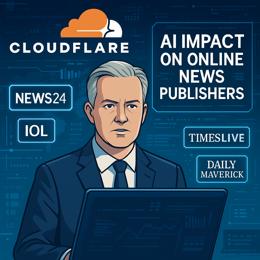Image created by AI
The Evolution and Impact of Large Language Models in Technology
In today’s rapidly advancing digital landscape, Artificial Intelligence (AI) technologies like large language models (LLMs) are reshaping not only how we communicate but also how we interact with machines. One significant leap in this arena is OpenAI's ChatGPT, a product of decades-long evolution in computational linguistics and machine learning.
Language models, the backbone of ChatGPT, are essentially complex algorithms designed to understand, predict, and generate human language. These models operate by calculating the probability of sequences of words, enabling functionalities like predictive text on smartphones or verbal responses from smart speakers. The prediction is based on historical data, processed to predict what comes next in a text or conversation thread.
The roots of modern LLMs can be traced back to 1951 with Claude Shannon's method of creating language models through sequences of words known as n-grams. Initially, these models were simple and relied heavily on short-term word sequences, making longer contextual predictions challenging. The introduction of neural networks marked a significant transition, offering a way to capture relationships between non-adjacent words and enhancing the model's predictive depth.
Neural networks were initially trained in sequence, a painstaking process requiring extensive computational resources and time. This changed dramatically in 2017 with the introduction of transformer models, which revolutionized training approaches by processing words in parallel. This shift not only sped up training but also allowed the models to learn from a vast corpus of text — as expansive as over a trillion words.
One of the most substantial advancements arrived with the capability of these models to interact using prompts — an interaction dynamically enhanced by reinforcement learning strategies. Here, the model refines its outputs based on user reactions — similar to iterative enhancements seen in game-playing AI.
Despite their capabilities, LLMs present considerable challenges, particularly in terms of resources. The training process for these sophisticated models is both financially and environmentally costly. Some reports suggest that developing state-of-the-art LLMs could cost hundreds of millions of dollars, not to mention the significant carbon footprint produced by the immense processing power required.
Nevertheless, as technology continues to integrate deeper into our everyday lives, the benefits and applications of LLMs seem boundless. From improving accessibility with real-time language translation to creating more responsive and understanding AI bots, the potential to enhance human-AI interaction remains vast.
However, as we venture further into this AI-driven era, addressing the ethical, financial, and environmental implications of these technologies is crucial. Ensuring that AI progresses in a manner beneficial to all of society will require continued research, investment, and thoughtful debate.
As we stand on the brink of what many consider a new technological renaissance, it is evident that LLMs and AI will continue to define a significant part of our digital future. Embracing these advances, while prudent in tackling their challenges, will be key to leveraging AI’s full potential.










